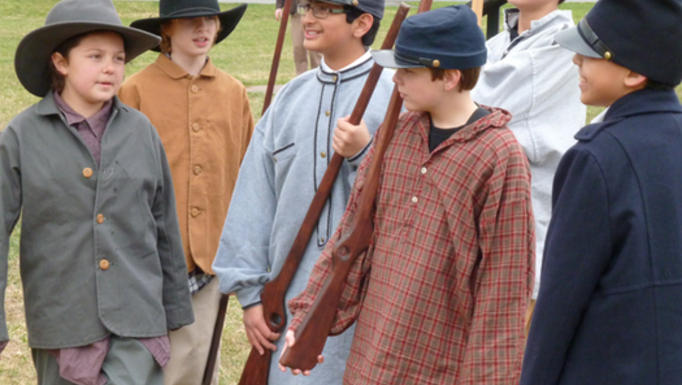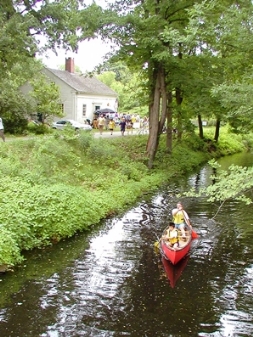To provide observations and information on the emerging fields of landscape scale conservation, heritage preservation, and sustainable community development.
Newsletter
Stay up-to-date with the latest nature, culture and community news.
We won’t spam you or share your information. Newsletters are sent approximately 10 times a year. Unsubscribe at any time.
1981 and 2017: What Can We Learn?
Flagging Sites of Universal Value

Federal Budget: First Look is not Promising
On March 16, 2017 the Whitehouse released its budget framework styled America First: A Budget Blueprint to Make America Great Again and the news was not great for programs that support large landscape conservation. For the FY 2018 the Department of Interior faces a proposed 12 % budget reduction and the Environmental Protection Agency is facing a 31% reduction. In general this brief document does not identify where the pain will fall except on the often pummeled National Heritage Areas. And while only the first step in the budget process, this proposal needs to be taken seriously.

Parks Without Borders: Valuing NPS Programs
Environmental economists have traditionally focused on the management of physical park units when performing economic valuations. The value NPS creates by operating cooperative programs outside of its park boundaries (including programs aimed at education, conservation, historical preservation, and recreation) through collaboration with local partners is just as relevant albeit more difficult to define.Still, we cannot omit the value that programs provide just because it is harder to quantify.

The 2016 Federal Budget: How did Large Landscapes Fare?
After months of uncertainty, weeks of negotiations and two short-term extensions to keep the government open, Congress passed and the President signed the 2009 page omnibus spending Bill, titled the Consolidated Appropriations Act of 2016. How did federal initiatives that support landscape scale work and fund our natural and cultural conservation program fare?

National Heritage Areas Deliver Place-Based Education
The thirtieth anniversary of the first National Heritage Area (NHA) and the upcoming centennial of the National Park Service (NPS), inspired research into the relatively untapped topic of the mutual benefits to both NHAs and the NPS. Recent research has explored how NHAs deliver place-based educational programming in partnership with nearby national park units.

Blackstone River Valley: Policy Without Money is just Talk
The Blackstone River Valley in Massachusetts and Rhode Island has long been a hotbed of innovation from its earliest industrialization to experimentation in protected area management with the creation of a National Heritage Corridor in 1986. Recently, the conservation possibilities of the region have been re-imagined yet again. In 2014, Congress authorized a new park unit – the Blackstone River Valley National Historical Park. How might this latest change affect the ongoing story of the heritage corridor with more than three decades of working on the ground in communities throughout the valley?

Federal Budget: First Look is not Promising
On March 16, 2017 the Whitehouse released its budget framework styled America First: A Budget Blueprint to Make America Great Again and the news was not great for programs that support large landscape conservation. For the FY 2018 the Department of Interior faces a proposed 12 % budget reduction and the Environmental Protection Agency is facing a 31% reduction. In general this brief document does not identify where the pain will fall except on the often pummeled National Heritage Areas. And while only the first step in the budget process, this proposal needs to be taken seriously.

Parks Without Borders: Valuing NPS Programs
Environmental economists have traditionally focused on the management of physical park units when performing economic valuations. The value NPS creates by operating cooperative programs outside of its park boundaries (including programs aimed at education, conservation, historical preservation, and recreation) through collaboration with local partners is just as relevant albeit more difficult to define.Still, we cannot omit the value that programs provide just because it is harder to quantify.

The 2016 Federal Budget: How did Large Landscapes Fare?
After months of uncertainty, weeks of negotiations and two short-term extensions to keep the government open, Congress passed and the President signed the 2009 page omnibus spending Bill, titled the Consolidated Appropriations Act of 2016. How did federal initiatives that support landscape scale work and fund our natural and cultural conservation program fare?

National Heritage Areas Deliver Place-Based Education
The thirtieth anniversary of the first National Heritage Area (NHA) and the upcoming centennial of the National Park Service (NPS), inspired research into the relatively untapped topic of the mutual benefits to both NHAs and the NPS. Recent research has explored how NHAs deliver place-based educational programming in partnership with nearby national park units.

Blackstone River Valley: Policy Without Money is just Talk
The Blackstone River Valley in Massachusetts and Rhode Island has long been a hotbed of innovation from its earliest industrialization to experimentation in protected area management with the creation of a National Heritage Corridor in 1986. Recently, the conservation possibilities of the region have been re-imagined yet again. In 2014, Congress authorized a new park unit – the Blackstone River Valley National Historical Park. How might this latest change affect the ongoing story of the heritage corridor with more than three decades of working on the ground in communities throughout the valley?


